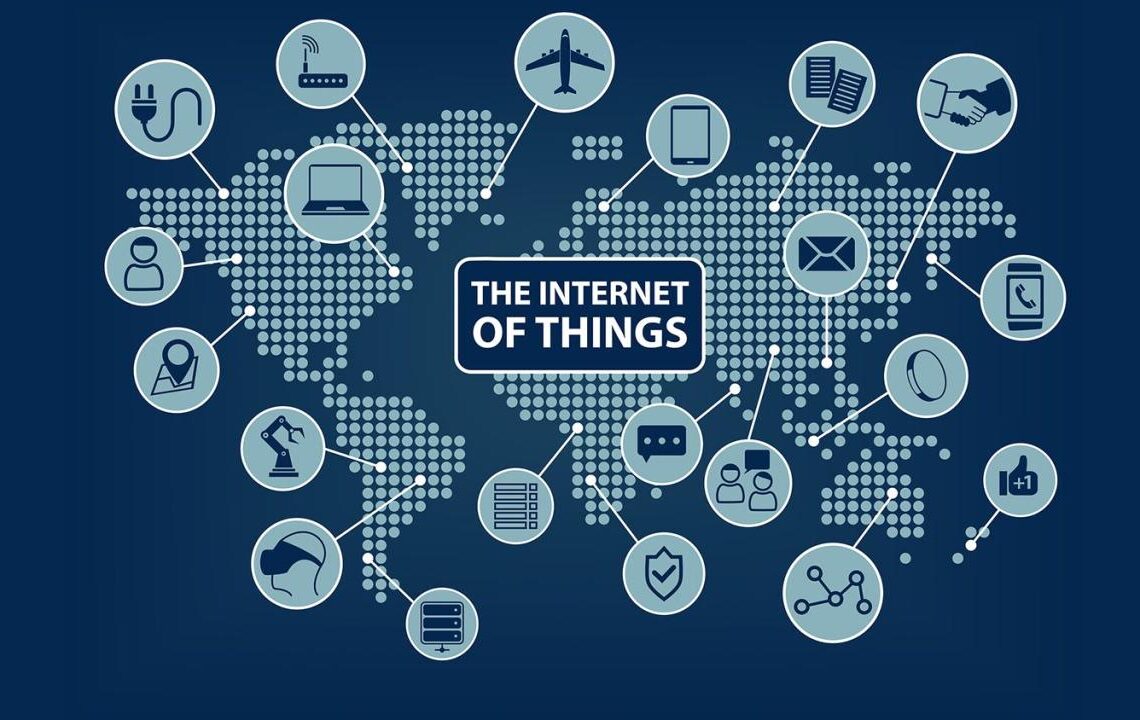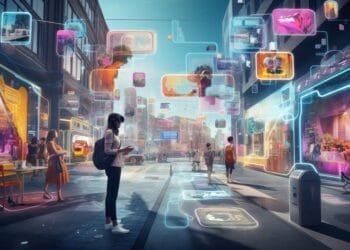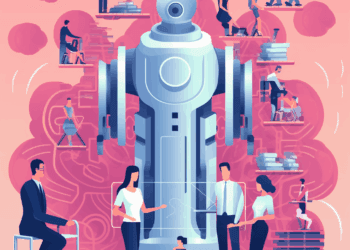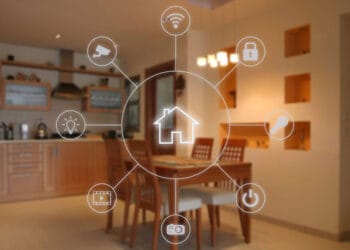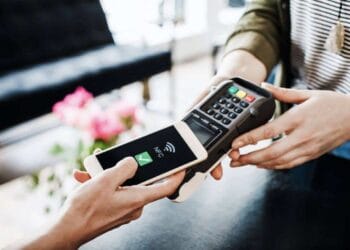In an era increasingly defined by digital interaction, the Internet of Things (IoT) stands as a monumental force, seamlessly weaving digital intelligence into the fabric of our physical surroundings. No longer a niche concept, IoT is revolutionizing how we live, work, and interact with our environment, transforming everyday objects into interconnected data points. From smart homes anticipating our needs to vast industrial networks optimizing global supply chains, IoT is literally connecting worlds – the digital and the physical – in unprecedented ways. This comprehensive article delves into the profound impact of IoT, exploring its core components, the technologies that empower its vast networks, its transformative applications across diverse sectors, and the critical challenges that accompany this explosion of connectivity.
What is IoT?
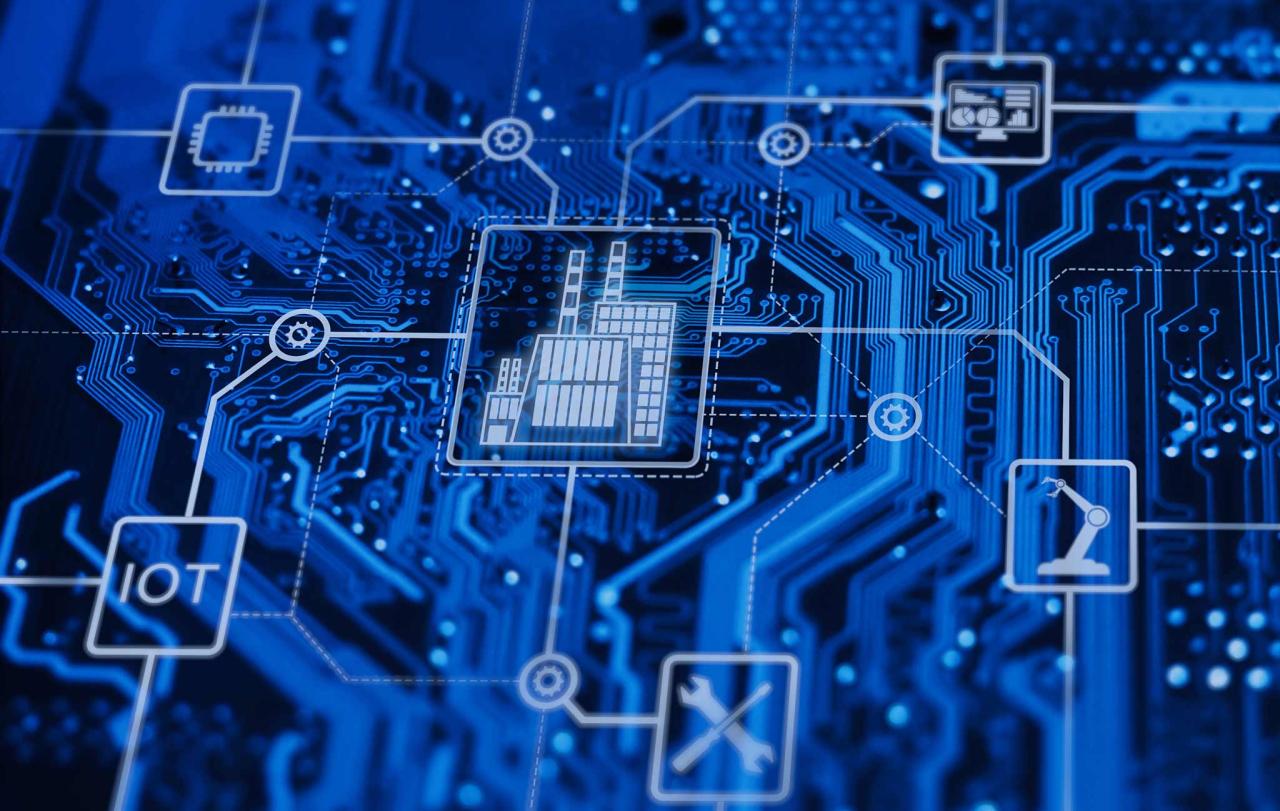
At its simplest, the Internet of Things (IoT) refers to a network of physical objects embedded with sensors, software, and other technologies for the purpose of connecting and exchanging data with other devices and systems over the internet. These “things” range from ordinary household appliances to sophisticated industrial machinery, all equipped with unique identifiers and the ability to transfer data over a network without requiring human-to-human or human-to-computer interaction.
The true power of IoT lies in its ability to bridge the gap between the digital and physical realms, turning raw data from the real world into actionable insights that drive efficiency, convenience, and innovation. It’s about bringing the power of the internet to the objects around us, enabling them to “talk” and perform tasks autonomously or with minimal human intervention.
Key characteristics that define the IoT ecosystem include:
- Connectivity: The ability of devices to connect to the internet and to each other, using various communication protocols (Wi-Fi, Bluetooth, Zigbee, cellular, LoRaWAN, etc.).
- Sensors: Devices that collect data from the physical environment, such as temperature, humidity, light, motion, pressure, and more. They are the “eyes and ears” of IoT.
- Actuators: Devices that can perform an action based on instructions received, such as turning on a light, adjusting a thermostat, or opening a valve. They are the “hands and feet” of IoT.
- Data Processing: The capability to process the vast amounts of data generated by connected devices, often involving cloud computing or edge computing for analysis and decision-making.
- Intelligence: The integration of Artificial Intelligence (AI) and Machine Learning (ML) to analyze data, identify patterns, make predictions, and enable autonomous decision-making by IoT devices.
- Unique Identification: Each IoT device has a unique identifier (like an IP address or MAC address) that allows it to be distinguished and addressed within the network.
A. The Core Components of an IoT System
A functional IoT system is typically composed of several integrated layers, working in concert to collect, process, and act upon data.
- Sensors/Devices: These are the foundational elements, serving as the physical layer that directly interacts with the environment. They collect data (e.g., temperature, light, motion, pressure, GPS location, heart rate) and, in many cases, are also equipped with actuators to perform actions. Examples include smart thermostats, fitness trackers, industrial pressure gauges, and smart cameras.
- Connectivity Layer: This layer is responsible for transmitting the data collected by sensors to a central platform for processing. It encompasses various communication protocols and network types:
- Short-Range: Bluetooth, Wi-Fi, Zigbee, Z-Wave (common in smart homes).
- Long-Range/Low-Power: LoRaWAN, NB-IoT (for wide-area deployments with low data rates and long battery life).
- Cellular: 4G LTE, 5G (for high-bandwidth, real-time applications, especially for mobile IoT).
- Wired: Ethernet (for fixed, high-reliability industrial applications).
- Gateways: Devices that bridge different communication protocols, translating data between sensors and the cloud, and often performing initial data filtering or aggregation.
- Data Processing Layer (Cloud/Edge): Once data is transmitted, it needs to be processed and analyzed.
- Cloud Computing: Centralized servers and services (e.g., AWS IoT, Google Cloud IoT Core, Azure IoT Hub) provide scalable storage, powerful analytics capabilities, and machine learning models to process vast datasets from millions of devices.
- Edge Computing: Processing data closer to the source (at the “edge” of the network, i.e., on the device itself or a local gateway). This reduces latency, saves bandwidth, and enhances privacy for time-sensitive or sensitive data applications.
- Data Lakes/Warehouses: Repositories for storing raw and processed IoT data for long-term analysis and historical trending.
- User Interface/Application Layer: This is where the insights derived from data processing are presented to users in an understandable and actionable format.
- Dashboards: Visualizations of real-time and historical data, trends, and alerts.
- Mobile Apps: Allow users to monitor and control IoT devices remotely.
- Web Portals: Provide comprehensive management and analytical tools for large-scale IoT deployments.
- Automation Rules: Allow users to set up automated actions based on predefined conditions (e.g., “if temperature > 25°C, turn on AC”).
- Analytics and Artificial Intelligence (AI): AI and Machine Learning algorithms are increasingly integrated into every layer, from optimizing sensor data collection to enabling predictive maintenance and autonomous decision-making. AI turns raw data into actionable intelligence.
IoT’s Transformative Impact Across Key Industries
The pervasive influence of IoT is fundamentally reshaping operations, creating new services, and enhancing experiences across an astonishing variety of sectors.
A. Smart Homes and Consumer IoT
The most visible face of IoT for many, smart home devices offer unparalleled convenience, energy efficiency, and enhanced security for individuals.
- Automated Lighting and Climate Control: Smart thermostats (like Nest, Ecobee) learn user preferences and optimize heating/cooling schedules, while smart lights can be controlled remotely, adjust brightness, or change color based on time of day or occupancy, leading to energy savings.
- Enhanced Home Security: Smart doorbells, cameras, and locks provide remote monitoring, motion detection, and keyless entry, allowing homeowners to secure their properties and respond to alerts from anywhere.
- Connected Appliances: Smart refrigerators track inventory, suggest recipes, and alert users to expiring food. Smart washing machines and ovens can be controlled remotely, optimizing their usage and providing alerts.
- Personal Assistants and Voice Control: Devices like Amazon Echo and Google Home integrate voice AI with IoT devices, allowing users to control their smart homes, play music, get information, and manage tasks with simple voice commands.
- Energy Management: IoT sensors monitor energy consumption of various appliances, providing detailed insights that help users identify energy hogs and implement strategies to reduce utility bills.
B. Smart Cities
IoT is instrumental in the development of smart cities, leveraging data to improve infrastructure, public services, and overall urban quality of life.
- Traffic Management: Sensors embedded in roads and traffic lights monitor real-time traffic flow, enabling dynamic signal timing to reduce congestion, optimize route planning for public transport, and provide real-time navigation updates.
- Waste Management: Smart bins with fill-level sensors alert sanitation departments when they need emptying, optimizing collection routes and reducing fuel consumption and operational costs.
- Public Safety: IoT-enabled streetlights can adjust brightness based on real-time conditions, smart cameras enhance surveillance capabilities, and gunshot detection systems can alert emergency services instantly, improving urban safety.
- Environmental Monitoring: Sensors monitor air quality, water levels, and noise pollution, providing crucial data for environmental protection, public health initiatives, and regulatory compliance.
- Smart Parking: Sensors detect vacant parking spots and guide drivers to them via mobile apps, reducing circling time, traffic congestion, and carbon emissions.
- Public Lighting Optimization: Smart streetlights with motion and light sensors can adjust their intensity based on activity and ambient light, saving energy and providing light only when and where needed.
C. Industrial IoT (IIoT) and Manufacturing
IIoT is revolutionizing manufacturing and industrial operations, driving unprecedented levels of efficiency, safety, and productivity.
- Predictive Maintenance: Sensors on machinery continuously monitor performance metrics (vibration, temperature, pressure, acoustics). AI algorithms analyze this data to predict equipment failures before they occur, enabling proactive maintenance, minimizing costly downtime, and extending asset lifespan.
- Asset Tracking and Management: IoT sensors track the location and condition of equipment, tools, and inventory within factories and across supply chains, improving asset utilization, reducing loss, and streamlining logistics.
- Quality Control: IoT sensors and cameras on production lines monitor product quality in real-time, detecting defects early, reducing waste, and ensuring consistent output quality.
- Supply Chain Optimization: IoT devices track goods in transit, monitor environmental conditions (temperature for perishables), and provide real-time visibility into the supply chain, enabling efficient routing, reducing spoilage, and improving delivery times.
- Worker Safety: Wearable IoT devices monitor worker vital signs, detect falls, or track exposure to hazardous conditions, alerting supervisors to potential safety issues and improving workplace safety.
- Remote Monitoring and Control: Operators can remotely monitor and control industrial processes, machinery, and facilities from a centralized location, enhancing operational efficiency and reducing the need for on-site presence.
D. Healthcare (IoMT)
The Internet of Medical Things (IoMT) is transforming healthcare delivery, enabling continuous patient monitoring, remote care, and more efficient hospital operations.
- Remote Patient Monitoring: Wearable devices and in-home sensors continuously collect patient vital signs (heart rate, blood pressure, glucose levels, oxygen saturation), transmitting data to healthcare providers. This enables proactive intervention, reduces hospital readmissions, and facilitates care for chronic conditions.
- Asset Tracking in Hospitals: IoT tags track medical equipment (wheelchairs, IV pumps), beds, and even patients within a hospital, improving asset utilization, reducing search times, and enhancing operational efficiency.
- Medication Management: Smart pill dispensers can remind patients to take medication and track adherence, ensuring proper dosage and improving treatment outcomes.
- Fall Detection: Wearable sensors can detect falls in elderly patients or those with mobility issues, automatically alerting caregivers or emergency services.
- Smart Hospitals: IoT optimizes hospital environments, managing climate, lighting, and even predicting patient flow to improve efficiency and comfort.
- Digital Therapeutics: IoMT devices can be integrated into digital therapeutic programs for chronic disease management or rehabilitation, providing real-time feedback and personalized interventions.
E. Agriculture
IoT is driving a revolution in agriculture, enabling “smart farming” that optimizes resource usage, increases yields, and promotes sustainability.
- Precision Agriculture: Sensors monitor soil conditions (moisture, nutrients), crop health, and microclimates. This data informs precise irrigation, fertilization, and pest control, minimizing waste and maximizing yields.
- Livestock Monitoring: Wearable sensors on animals track their health, location, activity levels, and reproductive cycles, enabling early detection of diseases, optimizing feeding schedules, and improving overall animal welfare.
- Smart Irrigation Systems: IoT sensors detect soil moisture levels and integrate with weather forecasts to automatically adjust irrigation, ensuring crops receive optimal water while conserving resources.
- Crop Monitoring and Yield Prediction: Drones equipped with multispectral cameras gather data on crop growth and health, which, combined with AI, can predict harvest yields and identify areas needing attention.
- Automated Farming Equipment: IoT enables autonomous tractors, planters, and harvesters that operate with greater precision and efficiency, reducing labor costs and improving productivity.
Challenges and Ethical Considerations in the IoT Era
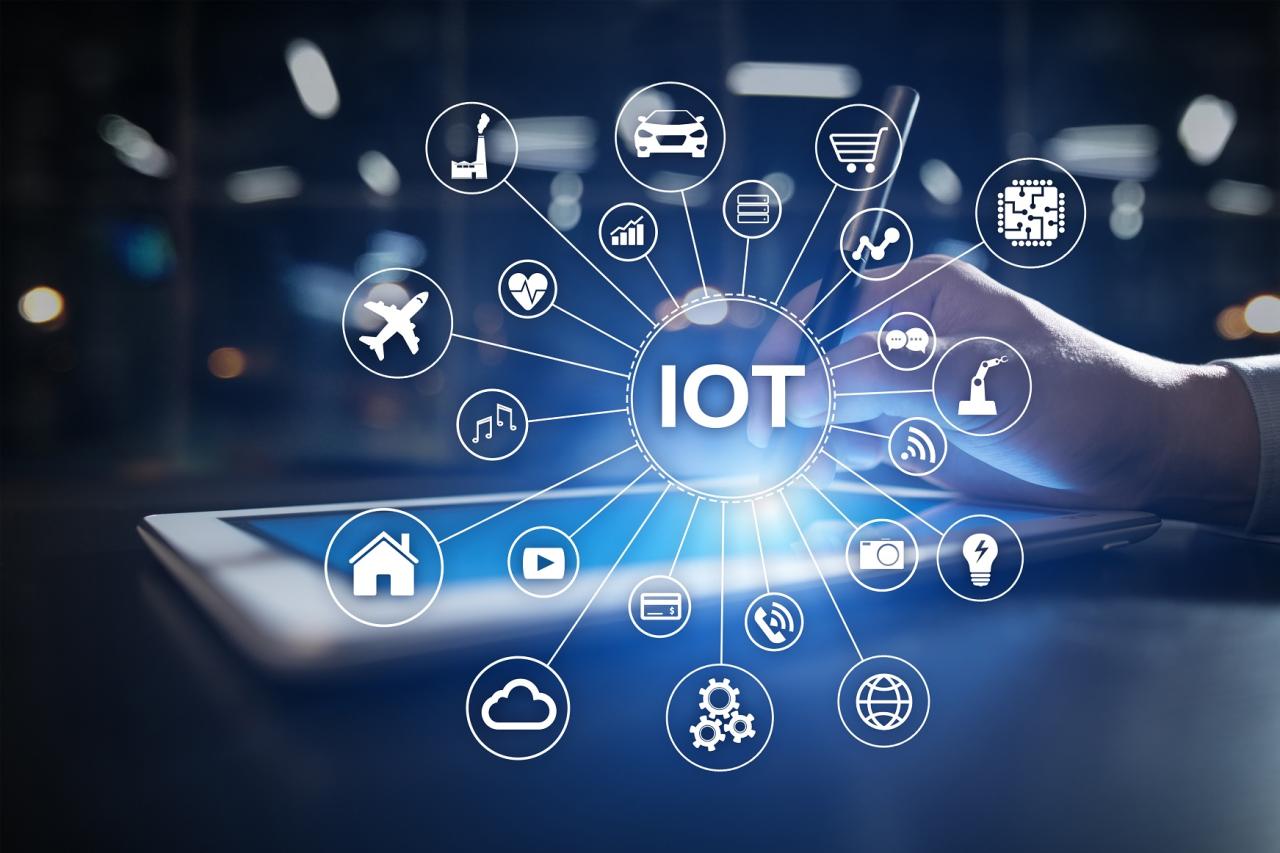
Despite its immense benefits, the widespread proliferation of IoT devices and data presents significant challenges and critical ethical dilemmas that demand careful consideration and proactive solutions.
A. Security Vulnerabilities
- Vast Attack Surface: The sheer number and diversity of interconnected IoT devices create an enormous attack surface for cybercriminals. Many devices have weak default security, making them easy targets.
- Vulnerable Devices: Many IoT devices are designed for low cost and low power, often lacking robust security features, making them susceptible to hacking, malware, and botnet recruitment (e.g., Mirai botnet).
- Data Breaches: IoT devices collect vast amounts of sensitive data (personal, health, operational). Compromised devices can lead to large-scale data breaches, exposing individuals and organizations to significant risks.
- Physical World Impact: Unlike traditional cyberattacks, compromised IoT devices can have direct physical consequences, from shutting down power grids to manipulating industrial machinery or compromising home security.
- Lack of Updates and Patching: Many IoT devices do not receive regular security updates or patches, leaving known vulnerabilities unaddressed for extended periods.
B. Privacy Concerns
- Pervasive Data Collection: IoT devices continuously collect granular data about our habits, locations, health, and environment, often without explicit and clear consent, raising concerns about constant surveillance.
- Data Monetization and Sharing: The data collected by IoT devices is often monetized by device manufacturers or third-party service providers, sometimes without users’ full understanding or control over how their data is used.
- Anonymization Challenges: With enough data points, even seemingly anonymized IoT data can potentially be re-identified, linking activities back to individuals.
- Lack of Transparency: Users often lack transparency into what data their IoT devices collect, how it’s stored, and with whom it’s shared, making it difficult to make informed privacy decisions.
C. Interoperability and Standards
- Fragmented Ecosystem: The IoT landscape is highly fragmented, with numerous manufacturers, platforms, and communication protocols. Lack of universal standards hinders seamless interoperability between devices from different vendors.
- Complex Integration: Integrating diverse IoT devices and platforms into a cohesive system can be technically challenging and costly, requiring specialized expertise.
- Vendor Lock-in: Users and businesses can become locked into specific vendor ecosystems due to proprietary protocols or platforms, limiting flexibility and future choices.
D. Ethical and Societal Implications
- Job Displacement: While IoT creates new jobs (e.g., IoT engineers, data analysts), it will also automate certain tasks, potentially leading to job displacement in sectors like manufacturing, logistics, and retail.
- Algorithmic Bias: If AI algorithms powering IoT decisions are trained on biased data, they can perpetuate and amplify existing societal biases, leading to unfair outcomes (e.g., in smart city resource allocation).
- Regulatory Challenges: The rapid pace of IoT innovation often outstrips the ability of governments to establish clear regulatory frameworks, leading to gaps in consumer protection, data governance, and liability.
- Digital Divide: Access to IoT technologies and high-speed internet is not universal. This could exacerbate existing digital divides, creating disparities in convenience, efficiency, and safety based on socioeconomic status.
- Dependence on Technology: Over-reliance on interconnected IoT systems for critical functions (e.g., smart grids, autonomous vehicles) introduces new risks if these systems fail or are compromised.
Conclusion
The Internet of Things (IoT) is not merely a collection of smart gadgets; it is a fundamental shift in how technology interacts with our physical world, transforming every object into a potential source of valuable data and a point of intelligent interaction. From the personalized comfort of smart homes to the unparalleled efficiency of industrial operations and the life-saving capabilities of IoMT, its influence is pervasive and transformative. IoT is truly connecting worlds, blurring the lines between our digital and physical realities.
However, the journey into a fully connected world must be navigated with caution and foresight. Addressing the formidable challenges of cybersecurity, data privacy, interoperability, and the ethical implications of pervasive sensing is paramount. By fostering collaboration among innovators, policymakers, ethicists, and the global community, we can ensure that IoT is developed and deployed responsibly, leading to a smarter, more efficient, and ultimately more beneficial future for all. The IoT is not just connecting worlds; it’s redefining our collective future.
